Walking past the Turkish Room and turning left, I reach the Entrance Hall, which is the main entrance into the house. It is dominated by a huge statue of Laocoon and his sons being devoured by serpents, another object which generated fear when I was little. There are muskets on the walls that were used by a regiment raised by my Great, Great, Great Grandfather, Christopher Sykes, during the Napoleonic Wars. Walking out of the left-hand door, I find myself in the Stone Hall, which occupies the central space on the ground floor, and whose tall windows look south across the park. Looking down towards the windows, the first room on the left is the Horse Room, formerly my father’s study, the walls covered with paintings of horses. Next comes the Music Room, painted in shades of grey and pink, which is the comfortable family sitting room containing the drinks tray and the newspapers. The room opposite is the formal Drawing Room, with its highly decorative ceiling. It is dominated by a great equestrian portrait of my Great, Great Grandfather, Tatton Sykes, mounted on his favourite hack and carrying a walking stick, which sits on the side table below it. If I turn left out of here, I find myself first in the Boudoir which, though now changed beyond recognition, fills me with memories of my mother, since it was once her sitting room, and then in the Dining Room, with its beautiful portrait by Romney of Christopher Sykes and his wife.
At the north end of the Hall, I ascend the grand stone staircase leading up to the most unexpected room in the house, the Library. Nobody entering this room for the first time, through its plain mahogany door, could help but catch their breath at the sheer audacity of its monumental scale. Two storeys high, with a vaulted ceiling inspired by the Baths of Caracalla and Diocletian in Rome, and running the entire width of the house, with nine windows overlooking the landscape, the 120-foot long polished oak and mahogany floor was a paradise to slide about on as a child. The other three sides of the staircase have a balcony running round them, overlooking the Hall, behind which runs a bedroom passage. There are six bedrooms and a pantry on the first floor, including the last bedroom I slept in before leaving home, the Orange Room, which includes a charming portrait of my Great Grandmother, Jessica Sykes, as a child. There are a further nine bedrooms, another pantry and the linen cupboard on the top floor, which once upon a time was the nursery floor where we spent the first few years of our lives.
Turning left at the top of the Blue Stairs and immediately right through tall, double, glass-fronted doors, I push open a grey door on the left and climb a narrow metal staircase which winds up into the attics, a rabbit warren of passages, long-abandoned servants’ bedrooms, spacious galleries lit by glass domes and dark, ghostly areas of roof space. I then take the lift down five floors to the cellars, and walk down dark passages to the very back, beyond the wine cellar, where there are remnants of ancient walls dug from the local Garton Shale, which makes up the ground beneath the house. In the seventeenth century the builders would have carved their cellars straight out of this material, which forms the foundations of the house. The vaulted arches are extremely well built, as good as anything you will see. I walk past the wine cellar, through the first arch, turn left and through the next arch, and look at the wall on the left leading up to the door. Garton Shale and an immensely thick opening make me believe that this is probably where the house was born.
Sledmere is one of those houses in which very little has ever been thrown away. Every drawer in every desk or cabinet seems to be stuffed with an eclectic mix of papers, photographs, letters and objects, which spill out when you open them. I was always fascinated by these as a child and spent many happy hours rifling through seemingly endless repositories of treasures. In the attics there were wooden chests filled with minerals, cupboards full of old glass bottles, huge leather trunks overflowing with old clothes, and ancient suitcases containing loose negatives and faded photographs. I particularly loved the large partners’ desk in the middle of the Library, whose multitude of drawers revealed, when opened, all kinds of curiosities: old coins, medals, bills, pieces of chandelier, seals, bits of broken china, etchings, ancient letters and the charred foot of an early Sykes martyr.
These early explorations awoke in me a passion for the history of the house, which was further fuelled by the discovery of a remarkable collection of photographs, some loose and scattered about in various chests, others in photograph albums. Most of these were kept in a cupboard in the Music Room, and chronicled the comings and goings of the family since the early 1850s. I became fascinated by these images of my ancestors, the earliest of which is a splendid portrait of my Great, Great Grandfather, Sir Tatton Sykes, who was born in 1772. It was taken in 1853 and he is sitting in a high-backed chair, his left arm resting on a table. His thick white hair is swept back from his forehead, and his strong features bear the ghost of a smile. His clothes are curious, for he is not dressed in the fashion of the time, but wears a long-skirted high-collared frock coat with a white neck-cloth and frilled shirt, together with breeches and mahogany-topped boots, the manner of dress of an eighteenth-century squire. He is undoubtedly a ‘character’ and I find it impossible not to like him.
But what of the first builder of Sledmere, my Great, Great, Great, Great, Great Uncle Richard Sykes, a man who died ninety years earlier, in an age when there were no photographers to record his image? The house is crammed with family portraits. They line the reception rooms, the passages, the back stairs and the bedrooms; full-lengths, half-lengths, heads and shoulders in oils, pastels and watercolour, of relatives both close and obscure. They are objects of such familiarity that until now I had never really looked at them properly. Richard Sykes hangs in the best bedroom in the house, the Red Room, at the top of the stone staircase on the right. He is just to the left of the door, and his portrait shows him to have been a well-fed looking gentleman. He is wearing a long black velvet jacket with a frilly lace shirt and cuffs and breeches with diamond buckles, and is seated at a desk surrounded by books. He has a prominent down-pointed nose, a pinkish complexion and he looks … well, thoroughly pleased with himself.
He had every reason to be. The eldest of six children, he was rich from the success of his family’s various mercantile ventures in Hull. He had status, having been appointed High Sheriff of Yorkshire in 1752. Best of all, however, was the fact that he had succeeded, on the death of his uncle in 1748, to substantial estates on the East Yorkshire Wolds, an area of undulating chalky hills, not unlike the Sussex Downs, that run from east of York nearly all the way to the North Sea. His uncle, Mark Kirkby, had been the richest and most important merchant in Hull. He had used part of the great fortune he had amassed to buy Sledmere and the surrounding estates, and went to live in the Tudor manor house which then stood there and was used mostly as a hunting lodge. He loved it, and the memory of him still survived in my Grandfather’s time.
Sometime in the middle of October, 1748, a year in which the first excavations were made at Pompeii, Samuel Richardson published Clarissa , and the Peace of Aix-la-Chapelle ended the War of the Austrian Succession, Richard set out on a journey to look at his uncle’s land. Leaving his house in Hull, he rode north, first to the nearby market town of Beverley, made prosperous during the days of the medieval cloth trade and dominated by its cathedral-size Minster, then followed the course of the River Hull through flat wetlands to Great Driffield. Here he began a slow laborious climb uphill, passing the tower of St Michael’s Church at Garton, pushing his horse on until he reached the summit of Driffield Wold. This is where the Kirkby land began, thirty miles north-east of Hull.
Читать дальше
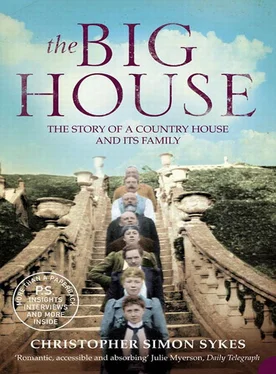
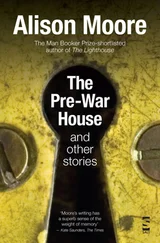



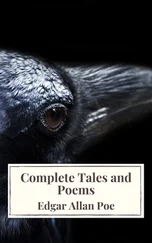

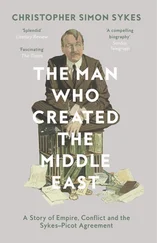

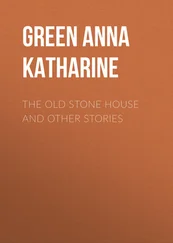


![Edward Ellis - Adrift on the Pacific - A Boys [sic] Story of the Sea and its Perils](/books/753342/edward-ellis-adrift-on-the-pacific-a-boys-sic-s-thumb.webp)